- Home
- Douglas E. Richards
Infinity Born
Infinity Born Read online
This book is a work of fiction. The characters, incidents, and dialogues are products of the author’s imagination and are not to be construed as real. Any resemblance to actual events or persons, living or dead, is entirely coincidental.
Copyright © 2017 by Douglas E. Richards
Published by Paragon Press, 2017
E-mail the author at [email protected]
Friend him on Facebook at Douglas E. Richards Author
Visit the author’s website at www.douglaserichards.com
All rights reserved. With the exception of excerpts for review purposes, no part of this book may be reproduced or transmitted in any form or by any means, electronic or mechanical, including photocopying, recording, or by any information storage and retrieval system.
First Edition
PART 1
The Rod of God
1
It was nearing seven in the morning and President Dillon Mattison was still reeling, three hours after having been awakened from a sound sleep and hastily ushered deep into the earth.
Years earlier the President’s Emergency Operations Center, built in the 1940s under the East Wing of the White House to withstand a nuclear attack, had been replaced by the bunker he was now in. This one was below the West Wing, and so fortified and deep that it made the other seem soft and shallow by comparison, as well as containing substantially upgraded communications and computer systems.
What had been PEOC, the President’s Emergency Operations Center, was now DUCC, the Deep Underground Command Center.
During his mad dash to get here, swept along by a whitewater river of Secret Service agents, Mattison had decided that the name DUCC couldn’t be more appropriate, although it needed to be spelled a different way—D-U-C-K, not D-U-C-C. And spoken more emphatically.
DUCK!
Because that was what he was really doing here. He was ducking. And it was beginning to really irk him.
Yes, there had been a horrendous mass casualty event that had taken the world by surprise, at least those who weren’t still sleeping in blissful ignorance. But he needed to be out front on this, on television. He needed to be presenting a face of calm. He needed to reassure, to grieve, to publicly provide condolences on behalf of a traumatized nation to friends and families of those tragically lost.
The last thing he needed was to be trapped in a glorified conference room as if he were in personal danger, sniveling like a child frightened of an act of nature that had happened thousands of miles away and that couldn’t possibly be a threat to him.
When the Secret Service had insisted that he remain where he was until they were dead certain this was a natural event, and not an attack, he had agreed. But this had been in the beginning of the crisis and by now they should be certain. He would give them thirty more minutes, out of respect, before he demanded to return to the surface.
Lou Nevins, Mattison’s Chief of Staff, sat beside him at the ridiculously elongated conference table, listening to a report coming through the comm in his ear, his face looking bleaker by the second. “We have an update on casualties,” he said to the gathering, which consisted of five flesh-and-blood humans on the president’s National Security Council and numerous others desperately gathering intel and joining or leaving the proceedings as virtual attendees, popping in and out of the Command Center in 3D glory, nearly indistinguishable from the real thing.
Everyone was juggling conversation and a frenzy of activities, but stopped in their tracks to listen to the Chief of Staff’s update.
“The original estimates were three thousand dead,” said Nevins, looking sick to his stomach. “But this has risen pretty dramatically. We’re probably looking at closer to five thousand.”
The meeting participants all looked as though they had been punched in the gut. The president visibly cringed and then shook his head in horror. Five thousand! The biggest loss since 9/11.
Even as he thought it, Mattison’s political instincts seized on the best possible spin to put on the situation. Today at three-thirty a.m. Eastern Standard Time, he would say during his address to the nation, a terrible tragedy occurred.
He would ignore the fact that the Secret Service had kept him in his underground prison for so long that his entire audience would already know this.
A meteor struck the city of Turlock, California, he would continue, with devastating effect.
He would go on to describe the terrible tragedy further, explain that its toll of lives was heavier even than on 9/11, and make it clear that no words could express his or the nation’s sense of loss. Although this is of little comfort right now, he would add, we can take some solace from the fact that this was an act of nature and not one of terror.
He wouldn’t have to spell it out further. The casualties may have been greater than those on 9/11, but at least this was a one-off event, not the prologue to a war against terrorism with no end in sight. In this case, the event would at least mark the end of the dying rather than the beginning. This would do little to salve the country’s immediate emotional wounds, but at least he could put the tragedy in the most positive context possible.
It didn’t help that Turlock, California, had become a shining example of the best of America. Of the future of America. When the US tech sector had grown too big for Silicon Valley, and Silicon Valley real estate had become too pricey to house non-millionaire employees, Turlock had beckoned. A hundred miles due east of the famous tech mecca, and a hundred times less expensive, it was the perfect place to spawn the son of Silicon Valley. Five years earlier the migration had begun, and Turlock farmers sitting on huge tracts of land had cashed in big.
Construction was rapid and never-ending as tech companies raced to Turlock—a city the press had begun calling New Silicon Valley, or NSV. Fortunately, the meteor had struck one of the less dense sections of the burgeoning city, and after midnight when the corporate headquarters affected were unoccupied. If it had struck during business hours the number of casualties would have skyrocketed. This, at least, had been a blessing.
Unfortunately, a spate of apartments and condos had sprung up near enough the strike to be in the blast zone. Anything and everything within a little over a half mile of the meteor’s point of impact had been destroyed, forming a circle of death over three miles around that was still filled with raging fires.
During 9/11 any number of people had burned to death, or had been forced to jump to their deaths to be free of the blistering heat. In the case of Turlock, many times this number had been burned alive, flash-fried, vaporized. Bile rose in the president’s throat as images of helpless victims dying in this way flashed across his mind’s eye.
Surely this was the most horrible of all ways to go.
The impact crater was centered on what had once been Quantum Sensor Technologies, a relatively small two-story building that had been in place for just over two years. Next to it had stood the headquarters of Cambridge Nanosystems, which had been a gleaming twenty-story glass structure. Along with these two, five other tech companies had built corporate headquarters of various sizes within the blast radius, and all seven had been flattened and incinerated.
As New Silicon Valley, Turlock had become one of the most concentrated centers of brainpower, innovation, and outside-the-box thinking in the world. It wasn’t as if tech geniuses were any more deserving of life than grocery clerks, but the blow to the economy and America’s technological competitiveness would be significant.
President Mattison was vaguely aware that Lou Nevins had continued speaking, giving the reason for the increased fatality estimates and describing the progress being made by first responders, called in from neighboring cities as well as the military, which Mattison had ordered deployed within minutes of reaching the Co
mmand Center.
Those flooding onto the scene had their hands more than full battling the raging fires and finding and tending to survivors. While no one could have possibly survived within the extended circle that was still in flames, a shock wave had swept through structures up to nine miles distant from the center of the strike, including additional apartment and condo complexes, causing hundreds, or even thousands, of injuries.
Mattison’s attention had drifted off, but it returned abruptly as the virtual presence of his Secretary of Homeland Security, Jeff Brown, popped into the meeting across from him and interrupted Nevins in mid-sentence. “This situation just went from bad to worse,” he announced gravely.
Brown paused for a moment to be sure he had everyone’s full attention. When all eyes and ears were fixed firmly on him, he continued. “Early on there were indications that not everything about the Turlock incident was what it seemed. But before I shared these suspicions, I wanted to be certain, and do some additional digging.”
The president swallowed hard. “What suspicions?” he demanded, realizing that Brown had, indeed, been absent from the proceedings for long stretches over the past three hours. Now he knew why.
“Half an hour after the strike,” replied the Secretary of DHS, “one of my experts, a professor at the University of Arizona named Cathy McGowen, told me that her analysis of satellite footage of the crater footprint suggested it wasn’t created by a meteor. At least not a natural one.”
The vice president, Pattie Hammond Blask, was seated to Mattison’s left, and was in no mood for riddles. “What the hell does that mean?” she demanded. “We’ve all seen the footage. And we’ve all seen it compared to aerial footage of past meteor events. It looked exactly like those.”
“I’m not an expert,” replied Brown, “but my understanding is that Dr. McGowen determined that the center of the crater was deeper than it should have been. Based on the ratio of the crater’s depth to its radius, she concluded that the meteor had to be shaped more like an arrow than a ball. Since then I’ve awakened hundreds of people in DHS and beyond, and I’ve confirmed that she was right—and much more.”
The Command Center was as silent as a tomb as they awaited the rest of Brown’s report. Given the stunned expressions on the faces of Andrew Havens, Secretary of Defense, and General Eric Faust, Chairman of the Joint Chiefs, Mattison was convinced the two military experts knew exactly where Brown was going with this.
“Based on Dr. McGowen’s calculations of the shape, velocity, and angle of impact of the meteor,” continued the Secretary of DHS, “my experts were able to go back into infrared satellite footage and get a still of the object.”
He touched a tablet computer and an image filled an eight-foot-tall touchscreen monitor against one wall of the Command Center’s conference room. While not perfect, the image was surprisingly sharp, and had been placed next to images of known objects such as trees and buildings so viewers could get a sense of its size.
“Is that a telephone pole?” whispered Secretary of State Chris Best in disbelief.
Brown gestured to Eric Faust. “Do you want to field this one, General?” he said.
“It’s a rod built for a kinetic attack,” said a seething Chairman of the Joint Chiefs through clenched teeth. He visibly fought to calm himself so he could continue. “Built to be dropped from orbit. Nicknamed the rod of God. You don’t need an active weapon or explosives to get nuclear bomb level results.”
“That’s exactly right,” said the Secretary of Defense, nodding in grim agreement. “The total kinetic energy an object picks up by being in motion is half of its mass times its velocity squared. So a tenfold increase in an object’s velocity increases the energy it carries a hundredfold. If this object is stopped dead in its tracks, all of this energy is released.” Andrew Havens frowned deeply. “Pick up a bullet and throw it at someone and it barely registers. But if this same tiny bullet is going fast enough, we all know how much damage it can do, how much force it can impart.”
“Speed kills,” said General Faust, picking up the baton. “It’s nearly impossible to overstate its power. Darth Vader wouldn’t need a Death Star to destroy the Earth—or any explosives for that matter. He’d just need to put a single star cruiser on autopilot and ram it into the planet at a tenth of the speed of light. That would be more than enough to do the trick. If Vader had ever figured that one out, he would have put a lot of Death Star contractors out of work.”
Mattison’s eyes widened. He had never considered just how much of a force amplifier raw speed was. If the Earth really could be destroyed by a single ship moving fast enough, humanity would be totally helpless to defend itself against a spacefaring alien civilization. He would never watch another space movie in quite the same way again.
“In 1908,” continued the general, “a meteor leveled over seven hundred square miles of dense wilderness near the Tunguska River in Russia. In total, the damn thing knocked down eighty million trees. Eighty million. And it was smaller than a high school football stadium.”
“The use of kinetic weapons dropped from orbit is illegal by treaty, of course,” explained Andrew Havens. “But that doesn’t mean our military hasn’t studied the shit out of the concept. So has every other military, for that matter.”
Brown gestured to the image on the monitor, ready to resume his presentation. “We’ve analyzed its composition, shape, and weight. It’s absolutely textbook for a kinetic round. The concept is simple. Just drop something from orbit, with no explosive payload necessary and very little guidance—assuming you’ve calculated correctly. As Secretary Best noted, the most effective shape is basically a streamlined, tapered telephone pole made of tungsten. This metal is very tough and has a melting point four times higher than steel. And this shape is hard to detect and cuts through the air nicely, increasing its velocity at impact.”
He paused to let this sink in. “The experts DHS contacted estimate that this glorified telephone pole hit the ground between Mach ten and Mach eleven.”
“What is that in miles per hour?” asked Pattie Hammond Blask.
“About eight thousand,” replied Brown. “Which is a little over two miles per second,” he added to give further perspective. “This is more than twice the velocity of a rifle shot.”
“Only this rifle round is made of tungsten and weighs tens of thousands of pounds,” noted the president.
Brown nodded grimly. “My people estimate the energy released on impact was the equivalent of thirty thousand pounds of TNT.”
This was a mind-blowing figure, but Mattison had seen the devastation with his own eyes and had no doubt that it was accurate.
So this had been an act of war, after all. The Secret Service had not been overly cautious. If more of these flying tungsten telephone poles were poised to drop, being deep under the White House was much preferred to being inside of it.
The president gritted his teeth. “It goes without saying that we need to know who is behind this,” he insisted. “Immediately! And we need to know if more of these things might be raining down on us. This information is of the highest possible priority,” he added unnecessarily.
Brown nodded. “Which is why I didn’t spend time reporting this finding two hours ago. Instead, I galvanized my organization to find these answers.”
“Are you saying you have them?” asked the president.
“Yes,” replied the Secretary of Homeland Security. “With very high confidence. I’ll walk you through what we’ve found, but let me give you the bottom line before I do. First, we’re confident that there is only one of these, thank God. And second, this attack wasn’t instituted by Islamic radicals or an adversarial nation-state. It was launched by a single American civilian.”
He paused, almost as if for dramatic effect. “To be more specific, it was launched by Isaac Jordan. From the Eureka, the flagship of his R-Drive fleet.”
Mattison’s jaw dropped open, and his wasn’t the only one. “Isaac Jordan?” he said,
shaking his head slowly. “Impossible! I don’t believe it.”
“I understand why you might say that,” said Brown. “But once you see the evidence I’ve gathered, I’m sure you’ll change your mind.”
2
President Dillon Mattison could only absorb so many shocks to his system, and after learning that the meteor strike on Turlock was really an attack, the idea that Isaac Jordan might be responsible was one shock too many.
There was no way Jordan was behind this. He didn’t care how much evidence Jeff Brown thought he had gathered.
Isaac Jordan was a legend, admired around the globe. His personal wealth was greater than that of most nations. He was a superstar entrepreneur, scientist, and world-changer who had become a bigger celebrity than Stephen Hawking, Bill Gates, Steve Jobs, Mark Zuckerberg, or Elon Musk before him.
There wasn’t a person on the planet who didn’t know his story.
Born last in a family of seven children, his father had deserted them soon after his arrival, leaving his mother to raise a family she couldn’t possibly afford. Largely responsible for himself since the day he learned to walk, Jordan had worked at odd jobs to earn money for food, and was largely absent from school.
Fortunately for him, he possessed a once-in-a-generation genius, and lived in an era in which he could pirate digital copies of expensive textbooks. He became a self-taught polymath, his genius unconstrained by narrow college majors or PhD programs, free to roam, to explore whatever interested him across numerous disciplines. Chemistry, math, physics, biology, computer science, sociology—he dived deep into each with unparalleled zeal.
He made millions starting and selling mundane companies by the time he was twenty-five, and then took a year off from business to change the face of physics as profoundly as Newton or Einstein had before him.

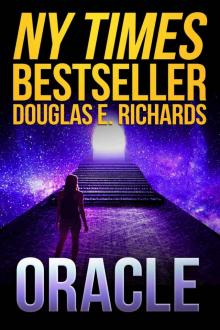 Oracle
Oracle![[2016] Infinity Born Read online](http://i1.bookreadfree.com/i/03/18/2016_infinity_born_preview.jpg) [2016] Infinity Born
[2016] Infinity Born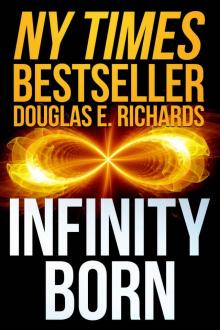 Infinity Born
Infinity Born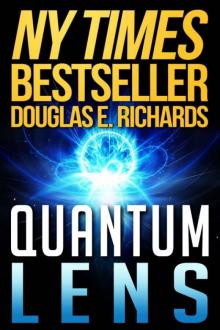 Quantum Lens
Quantum Lens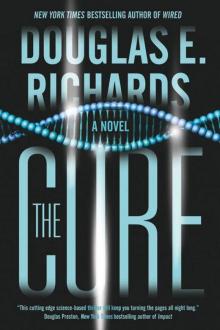 The Cure
The Cure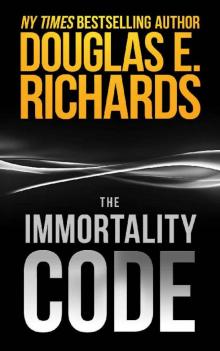 The Immortality Code
The Immortality Code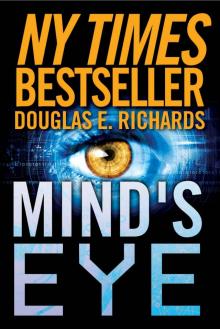 Mind's Eye
Mind's Eye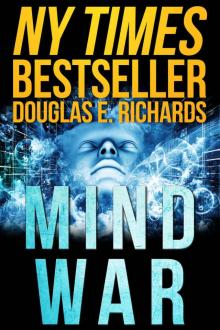 MindWar (Nick Hall Book 3)
MindWar (Nick Hall Book 3)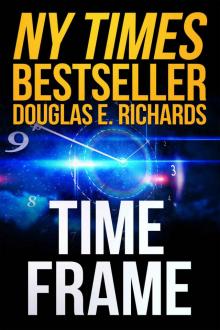 Time Frame (Split Second Book 2)
Time Frame (Split Second Book 2)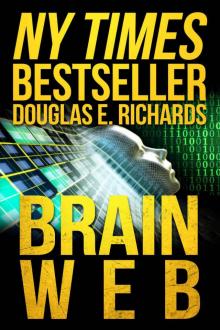 BrainWeb
BrainWeb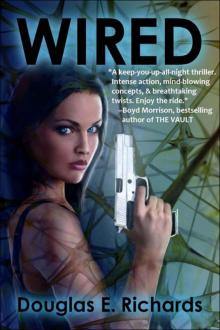 Wired
Wired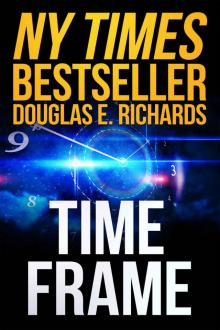 Time Frame
Time Frame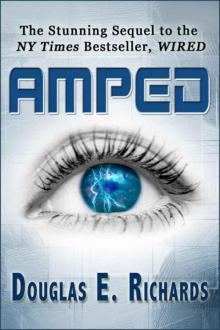 AMPED
AMPED Out of This World
Out of This World AMPED w-2
AMPED w-2